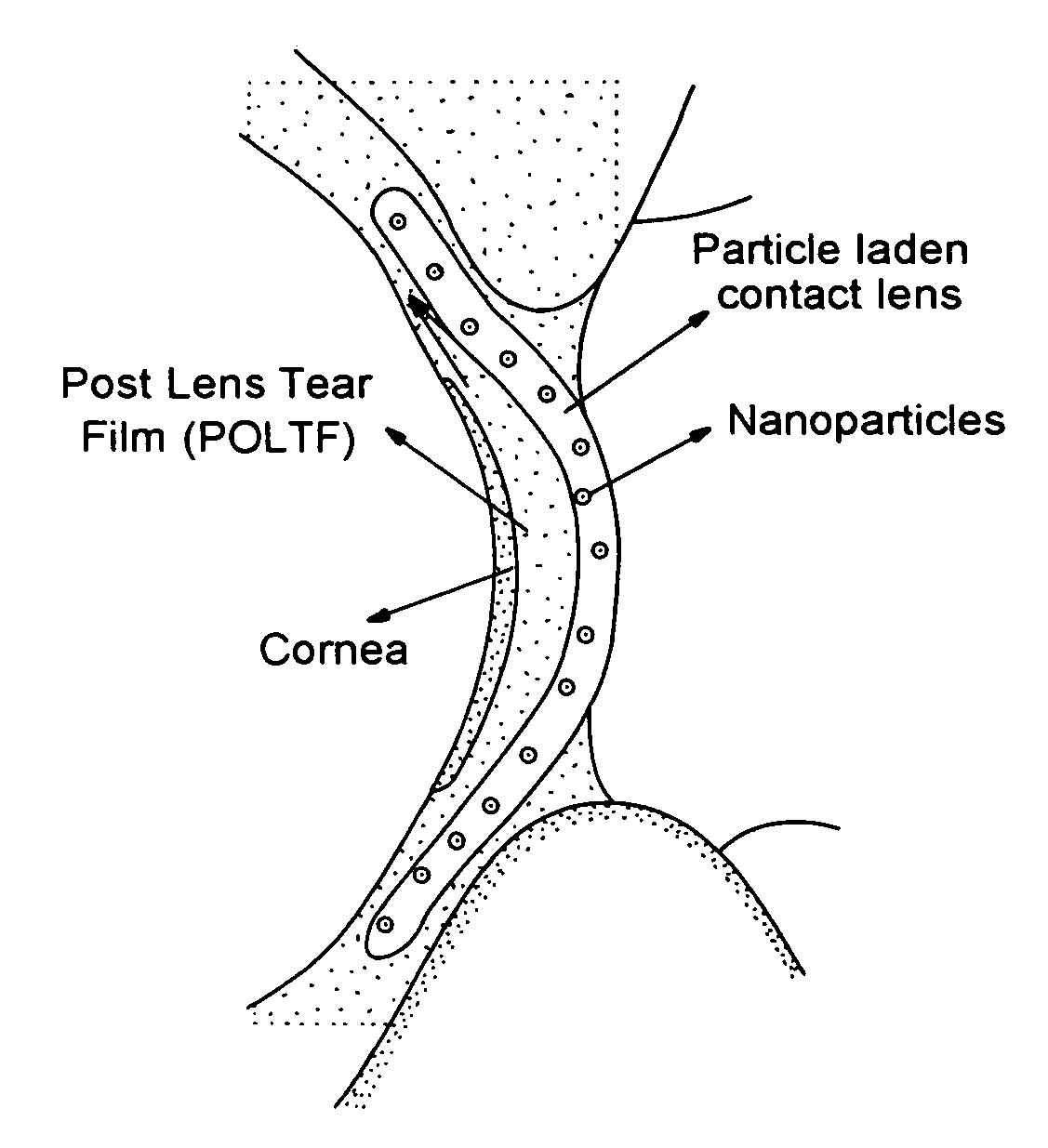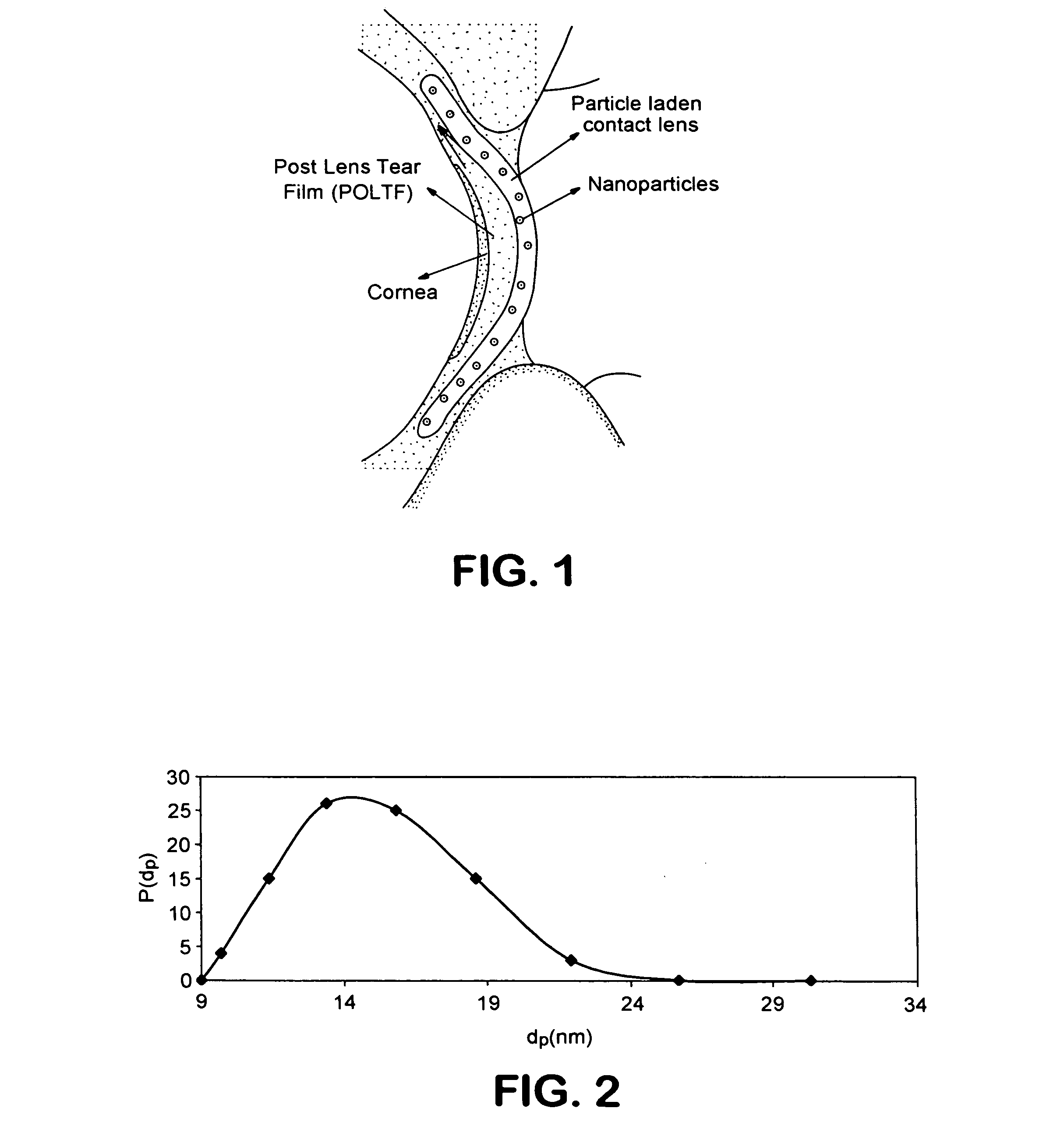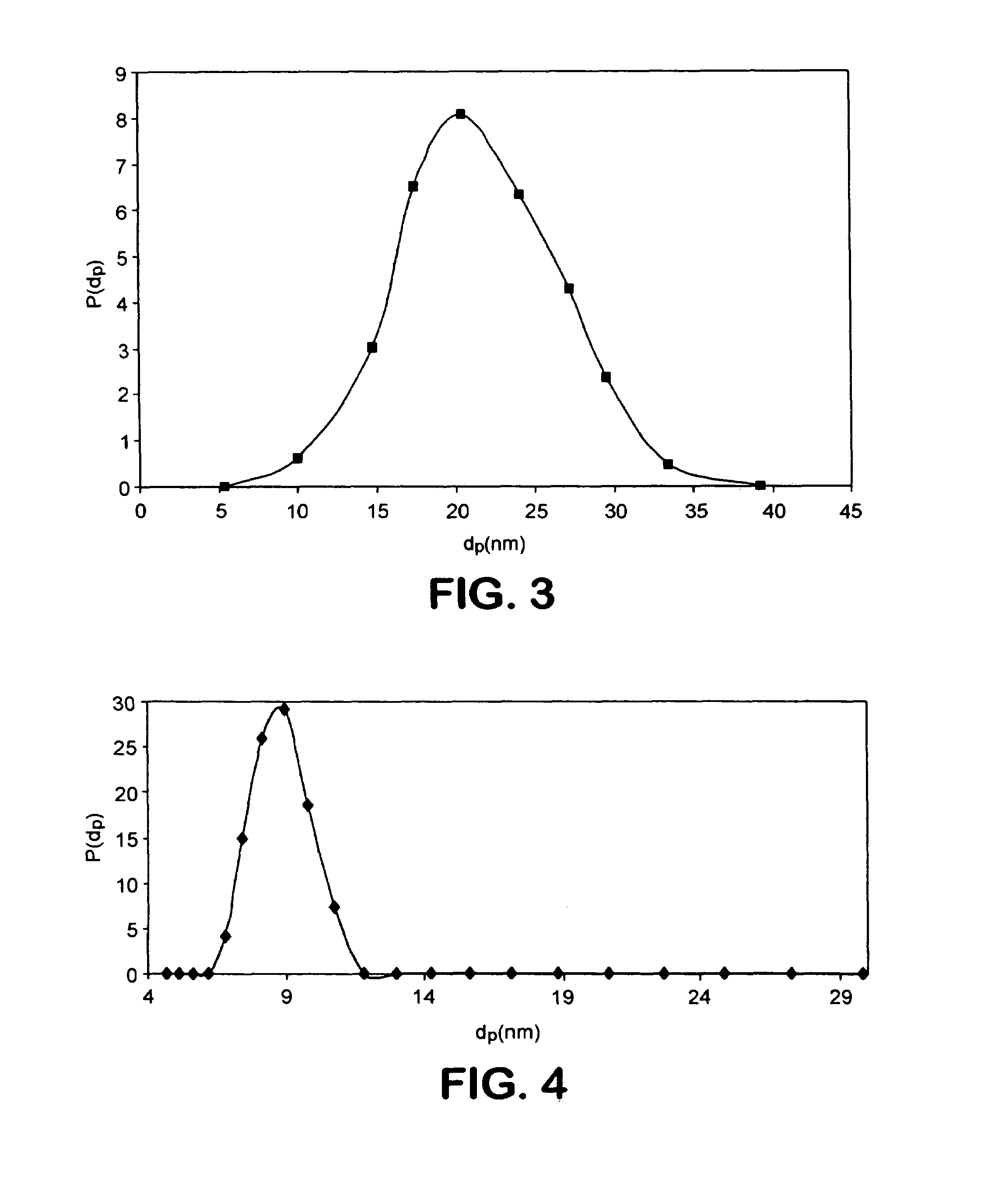Ophthalmic drug delivery system
- Summary
- Abstract
- Description
- Claims
- Application Information
AI Technical Summary
Benefits of technology
Problems solved by technology
Method used
Image
Examples
Embodiment Construction
[0022]The present invention is predicated on the discovery that contact lenses, preferably, soft contact lenses can function as new vehicles for ophthalmic drug delivery to reduce drug loss, eliminate systemic side effects, and improve drug efficacy. The crux of the invention resides in the encapsulation of the ophthalmic drug formulations in nanoparticles and the dispersion of these drug-laden nanoparticles in the contact lens matrix (FIG. 1). If the nanoparticle size and loading are sufficiently low, the particle-loaded lens is transparent. The invention is exemplified herein using soft hydrogel lenses that are made of poly 2-hydroxyethyl methacrylate p-(HEMA). However, it will be understood by those skilled in the art that the range of materials that may be employed as vehicles in the present invention is limited only by the selection of materials that may be employed in the manufacture of contact lenses and the nature of the particular ophthalmic drug to be incorporated therein....
PUM
| Property | Measurement | Unit |
|---|---|---|
| Fraction | aaaaa | aaaaa |
| Particle size | aaaaa | aaaaa |
| Weight | aaaaa | aaaaa |
Abstract
Description
Claims
Application Information
 Login to View More
Login to View More - R&D Engineer
- R&D Manager
- IP Professional
- Industry Leading Data Capabilities
- Powerful AI technology
- Patent DNA Extraction
Browse by: Latest US Patents, China's latest patents, Technical Efficacy Thesaurus, Application Domain, Technology Topic, Popular Technical Reports.
© 2024 PatSnap. All rights reserved.Legal|Privacy policy|Modern Slavery Act Transparency Statement|Sitemap|About US| Contact US: help@patsnap.com










